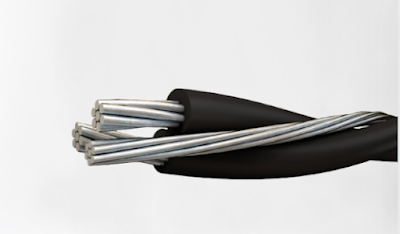Difference between 11KV and 22KV
Voltage levels are extremely important in the world of electrical distribution. The difference between 11kV and 22kV wires is in their voltage capabilities. An 11kV cable runs at 11,000 volts, whereas a 22kV cable operates at 22,000 volts.
These variances have an influence on their uses and acceptability for various settings.11kV cables are mostly utilised for urban distribution and local substations, although they also serve residential and commercial regions.
They are used in sectors with moderate power requirements. 22kV cables link primary and secondary substations and have a greater voltage capacity. They serve industries that require a lot of electricity. Renowned cable manufacturers such as Nexans Australia and Olex provide dependable 11kV and 22kV solutions.
Voltage levels are essential for safely and effectively delivering electricity in the field of electrical distribution. The voltage levels of 11 kV and 22 kV are two that are often utilised and each has a specific function in power distribution networks.
The distinctions between these two voltage levels (11KV and 22KV) are explored in this article, along with their importance in electrical systems.
11KV and 22KV cables:
Voltage level:
The difference in voltage between 11kV and 22kV cables is the main factor to consider. A 22kV cable runs at 22,000 volts, whereas an 11kV wire runs at 11,000 volts. The power distribution networks and the equipment employed are significantly impacted by this voltage variation.
Application and usage:
1.11KV cables:
• Urban distribution:For distributing electricity in cities, 11kV cables are frequently utilised. They have a moderate voltage level, making them useful for distributing energy to both residential and business sectors.
• Local substations:The distribution of power from the major substations is facilitated by these cables, which link neighbourhood substations to homes and businesses.
• Industrial use:In industrial situations where a modest power supply is necessary for manufacturing operations, 11kV cables are also used.
2.22KV cables:
• Intermediate voltage:Comparatively speaking, 22kV cables operate at a greater voltage than 11kV cables. When a bigger power supply is required for distribution to broader regions, they are employed.
• Primary substance:Primary substations and subsidiary substations or other distribution sites are frequently connected with 22kV cables. They are a key link in the system for distributing power.
• Heavy industries:In order to assure an adequate supply of electricity, 22kV cables may be used in sectors with significant power demands, such as big factories or data centres.
Cable size and current carrying capacity:
Larger conductor diameters are often needed for higher voltage cables to handle the greater current carrying capability. This is because, in order to transmit the same amount of electricity, greater voltages need the transmission of larger currents. In comparison to 11kV cables, 22kV cables may thus have bigger conductors.
Equipment capability:
The infrastructure and equipment already in place have a significant impact on whether 11kV or 22kV cables are used. Transformers, switchgear, and other parts of the distribution network's components must all operate at voltage levels that are compatible with them. These components may need to be adjusted in order to increase or decrease the voltage level, which might have logistical and financial ramifications.
Cable manufacturers in Australia:
Australia is home to a thriving electrical manufacturing sector, which includes respected cable manufacturers who offer a wide selection of solutions for various voltage levels. Several well-known cable producers in Australia are Nexans Australia, Olex and Prvsmian Group.
Cable suppliers in Australia:
There are several providers in Australia from which to choose cables of various voltage levels, including:
• Electra cables:Electra Cables supplies a diverse range of cables, including those suitable for 11kV and 22kV applications.
• Auslec:Auslec is a reputable electrical product supplier that provides a variety of cables for various voltage needs.
• RS components:RS Components offers a wide selection of cables and accessories to meet the demands of diverse industries.
The distinctions between 11kV and 22kV cables are crucial in the complicated realm of electricity distribution. Despite the fact that both properly distribute electricity, the differing voltage levels allow for a variety of situations, from urban distribution to heavy industrial uses. The application, equipment compatibility, and power consumption all play a role in selecting the proper cable voltage level. Reputable cable manufacturers and cable suppliers in Australia help to make dependable and effective cable solutions available, providing a strong electrical infrastructure all over the nation.
An extensive selection of solutions, including 11kV and 22kV cables, are offered by Znergy Cable, a top Australian cable manufacturer. For big industry and metropolitan regions, these cables provide effective power delivery.
In contrast, Znergy's knowledge spans a variety of cables, including low, medium, and high voltage cables, control, instrumentation, and fibre optic cables. As a trusted partner in enabling smooth electrical connectivity across several sectors, Znergy Cable is known for their dedication to cutting-edge technology, customisation, and dependability.



Comments
Post a Comment